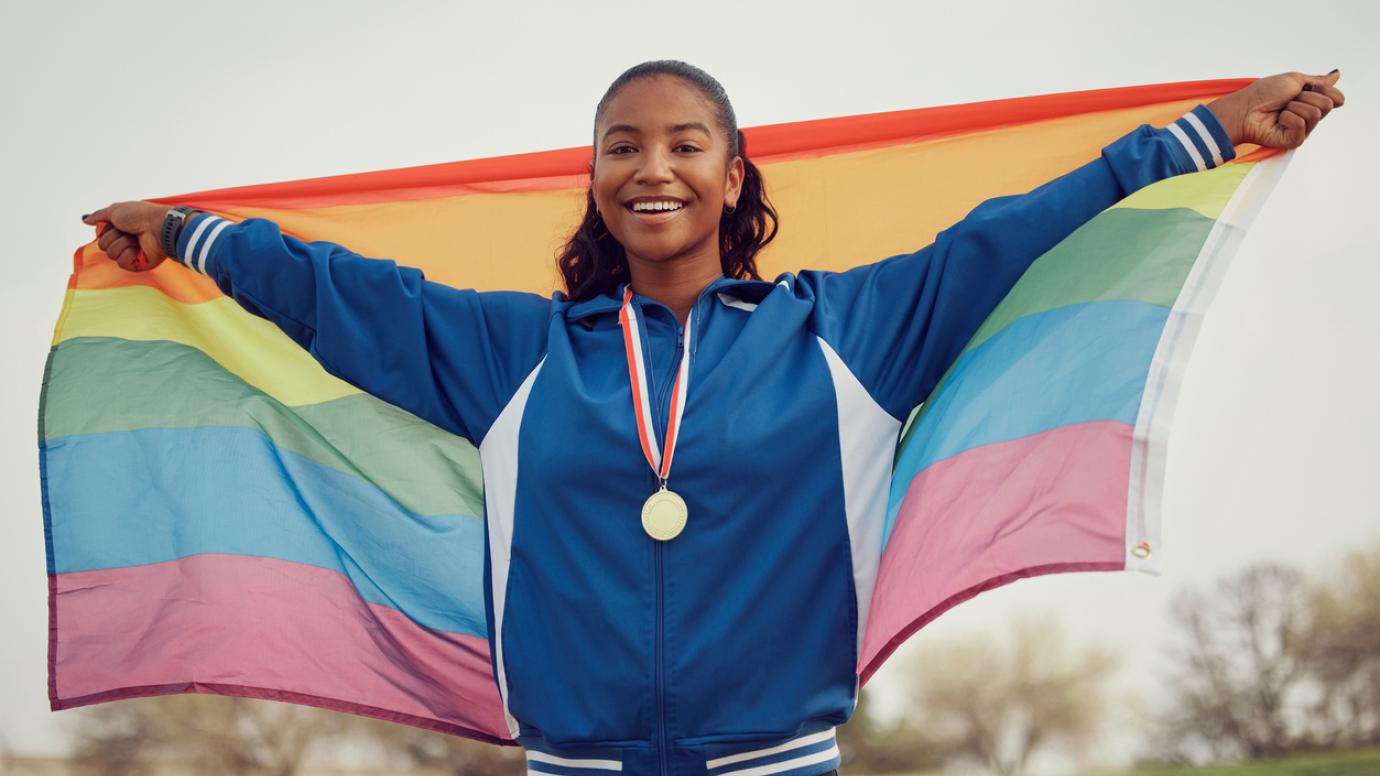Breaking barriers: the LGBTQIA+ community
We met with 2 representatives from the lesbian, gay, bisexual, trans, queer, intersex, asexual and other (LGBTQIA+) sport community
- Rosario Coco, President of the Italian LGBTQI association Gaynet, and Project Manager for the LGBTI sector of AICS - Associazione Italiana Cultura Sport
- Branislav Fidler, Vice-President of the Slovak LGBTIQ+ sport club Lotosové kvety
They talked about existing challenges and barriers faced by the LGBTQIA+ community when practicing sport, and how to overcome them.

Discrimination and exclusion
Like most minority groups, the LGBTQIA+ community is often subject to discrimination and exclusion, making it vulnerable. Sport in particular has often been called out for not being a welcoming environment for LGBTQIA+ people.
Looking at the current situation, Rosario Coco draws a bitter conclusion when it comes to the practice of sport for LGBTQIA+ people. He notes that sport is a not a safe space, citing some alarming figures from the 2019 Outsport survey: nearly 90% of people consider homophobia and particularly transphobia a problem in sport.
The study reveals that 20% of LGBTQIA+ people refrain from participating in sport due to their sexual orientation and/or gender identity. What’s more, 82% have witnessed homo-/transphobic language in sport in the last 12 months.
While these dynamics make it difficult for LGBTQIA+ people to consider sport a safe space, Branislav Fidler also underlines the absence of role models with which members of the community can identify
When we look further from the school environment, we find that there is a desperate lack of role models in the world of sport in Slovakia.
Yet, this problem is not limited to sport only. Rosario sums up his observations by linking them to the broader picture.
If we consider that sport is a mirror of society, then there is a very huge challenge in terms of prejudice in sports and all the social environments that are connected to sports, which are many
The message is clear – the aim is not to treat sport as an isolated case, but rather as one part of a bigger, societal issue.
Tackling discrimination
The challenges are real and the work to be done quite substantial. However, the question that should be asked next is about what can be done. To get a better understanding of this, we asked our 2 spokesmen who did not fall short of ideas.
First of all, the problem needs to be tackled at the very root. As Rosario puts it
The important thing is to realise that those who work with children in the field of sport have a very huge power to stop at the root any kind of discrimination and prejudice.
Here, the pivotal role of youth can play could not have been made any clearer. On top of this, it is necessary to get the support from multiple stakeholders, and as such ensure that overcoming the barriers is done at every level. This will also allow for everyone to be aware of the challenges and offer everyone the possibility to tackle the issue at their own level and with their own means.
In that respect, Branislav would love to see statements of support from sport administrations, associations, clubs and professional athletes. Guidelines for schools and universities would also be useful. Rosario adds that companies also have a crucial role to play as they shape people’s imagination, sponsor sportspeople and their achievements.
Last but by far not least, the next logical step is to concretely address these challenges and make sure that barriers are removed in the field. Words and speeches are great, but the sequel to these statements should be impactful actions.
Branislav makes it unambiguous
You also need to put your policy into practice. Promote the inclusiveness and safe space to encourage people to do sports without worries, fear or anxiety. Support all your athletes to openly come out on the sports field if they want to.
The work of Outsport
At Outsport, a toolkit to support sport educators in developing a more inclusive environment was published in 2019. It contains a set of education activities for sporting teams to learn about diversity and inclusion.
One of them is called 'Football For All?' and puts players in situations they could face in real life. The role-play helps participants experience discrimination and build empathy towards those who are discriminated or excluded.
While there is still a long way to go before sport can become a fully safe and inclusive environment for the LGBTQIA+ community, some real progress has been made. People like Branislav, Rosario and many others are working every day to break barriers and make opportunities available to everyone by fighting discrimination.
Last updated:


